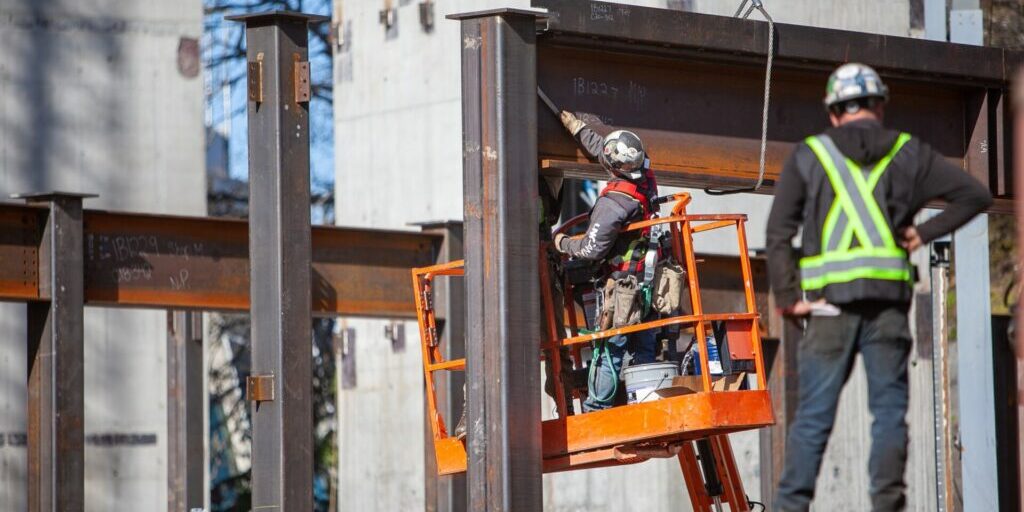Construction Change Orders: What They Are, and What They’re Not

Change orders are an essential part of any construction project.
But not all design changes, scope, or schedule modifications justify a change order.
Let’s look at five situations that change your contract documents without requiring a change order and why they matter.
Here’s what we cover:
- What is a construction change order?
- What are addendums?
- What is an ASI in construction?
- Can an ASI lead to a construction change order?
- What are substitution requests?
- What are Value Engineering Change Proposals (VECP)?
- Do time extension requests require a change order?
- Managing construction change orders to reduce their negative impact
What is a construction change order?
Change orders are legal agreements that modify an existing construction contract by changing its terms, conditions, or scope of work.
When the owner makes design changes or unexpected site conditions expand a contractor’s scope of work, change orders document these issues by amending the construction contract.
Some change orders are additive—adding time, material, or expense to the project contract. And some change orders are deductive—reducing or eliminating time, materials, and cost.
But not every design change or scope modification takes the form of a change order.
What are addendums?
Addendums add details to the construction documents’ terms, conditions, and work scope.
Architects typically issue addendums during the pre-bid and preconstruction phases to add details to design elements, modify the construction drawings, or clarify the project specifications.
Addendums are usually in response to RFIs from bidding contractors. Or when the owner finds something in the plans they’d like altered or better defined.
Are addendums the same as change orders?
No. Addendums are not the same as a change order.
An addendum is similar to a change order because, like a change order, addendums add design elements, specifications, or details to the contract documents that change the project’s scope.
But addendums are different than change orders in one significant way.
Architects generally issue addenda before bidding.
That means that while addendums add to the work scope or modify the design specifications, contractors still have the opportunity to include those changes in their final price. No change order is required because there’s no contract to change.
What is an ASI in construction?
ASI stands for Architects Supplemental Information (ASI).
Architects issue ASIs to give contractors additional instructions and interpretations of their architectural plans and to make changes that do not necessarily change the contract sum or schedule.
ASIs typically address minor changes, such as color, style, or placement of design elements. And once issued, an ASI becomes an enforceable contract document.
No contractor approval is required, which is an important distinction. Because the contractor performing the work covered in the ASI needs to consider whether the change directive will affect the cost or schedule.
Can an ASI lead to a construction change order?
In most instances, ASIs have no cost or time impact, so they do not qualify for a change order.
However, best practice dictates the contractor should investigate the matter to be sure.
Suppose the contractor finds the architect’s supplemental instructions do indeed affect the cost or project schedule.
In that case, they need to contact the architect immediately and submit a change order request explaining their position.
What are substitution requests?
A substitution request is formal document contractors use to request materials or methods other than what the contract documents specify.
Contractors might suggest substitutions based on
- Safety,
- Functionality, or
- Material availability.
A substitution request is not a construction change order but merely a request to make a change.
However, substitution requests can lead to change orders if the substitution is accepted and the situation warrants a contractual change in scope, time, or cost.
What are Value Engineering Change Proposals (VECP)?
A Value Engineering Change Proposal (VECP) is similar to a substitution request because it proposes substitutions that deviate from the contract specifications.
The difference is that VECPs offer mutually beneficial substitutions that save the owner money while adding value to the finished asset.
Value Engineering, by definition, provides
- Added safety,
- Reliability,
- Functionality, and
- Added efficiencies
- at lower cost and
- in less time than initially specified in the contract documents.
And like substitution requests, Value Engineering Change Proposals (VECP) are not construction change orders but merely requests to make mutually beneficial changes.
If the owner and design team decide to accept the value engineering change proposal, they will issue a change order to amend the contract and make it official.
Do time extension requests require a change order?
Time extension requests propose to alter the agreement between the contractor and the project owner by extending the contracted schedule time.
Some construction contracts make allowances for time deviations, while others do not. So, contractors must read their contracts carefully to understand their rights and responsibilities before making a time extension claim.
Image courtesy of the North Dakota Department of Transportation, Construction Services
Contractors use time extension requests to explain why they cannot abide by the original contract timeline due to forces beyond their control.
Some of the many reasons contractors cite for their failure to abide by the project schedule include the following:
- Unforeseen site conditions,
- Weather,
- Permitting delays,
- Labor strikes, or
- Delays in the supply chain.
Suppose the owner and design team agree with the contractor’s reasoning and grant the time extension. And there are no allowances for time extension listed in the contract. In that case, a change order must follow to amend the agreement officially.
Managing construction change orders to reduce their negative impact
No one likes change orders when they interrupt the project schedule, cause delays, or increase costs.
But construction change orders are unavoidable, and they’re a critical piece of every construction contract.
Improve your change order process with automated workflows.
The Linarc project management system significantly improves the change order process.
Managing change, reducing risk, and keeping projects on track are all made easier with Linarc’s simple yet cost-effective solutions.
Keep all project stakeholders informed and on task with an integrated project management system.
Get a custom demonstration of the Linarc project management system today—the intelligent, intuitive, easy-to-use tool for managing the complexity of today’s building projects.
Connect – Build – Thrive with Linarc




